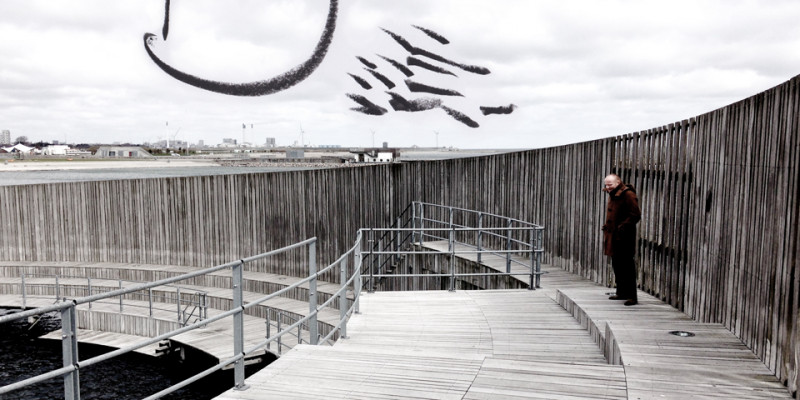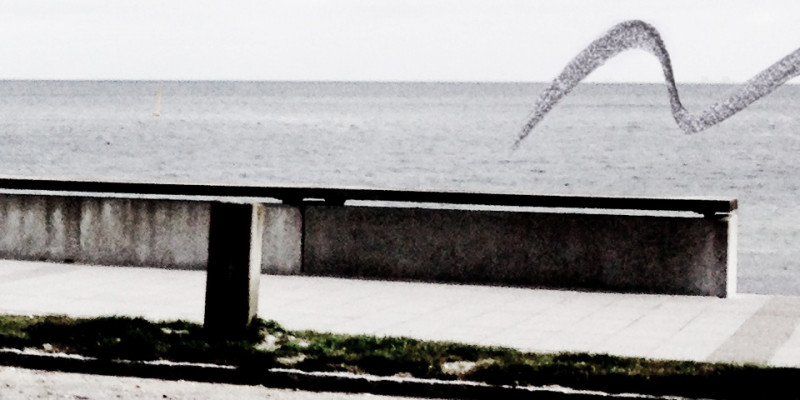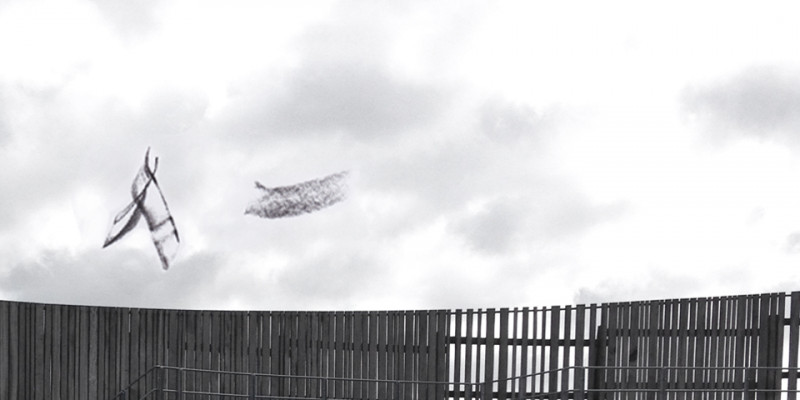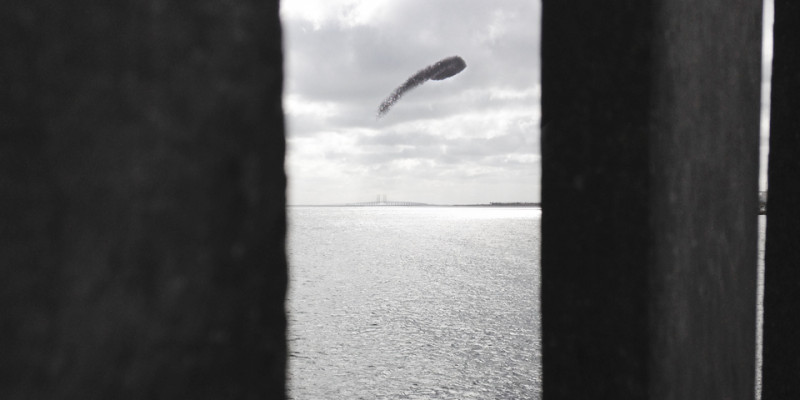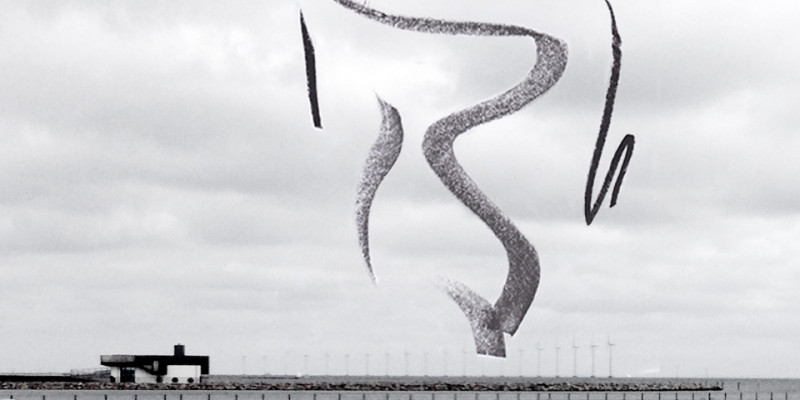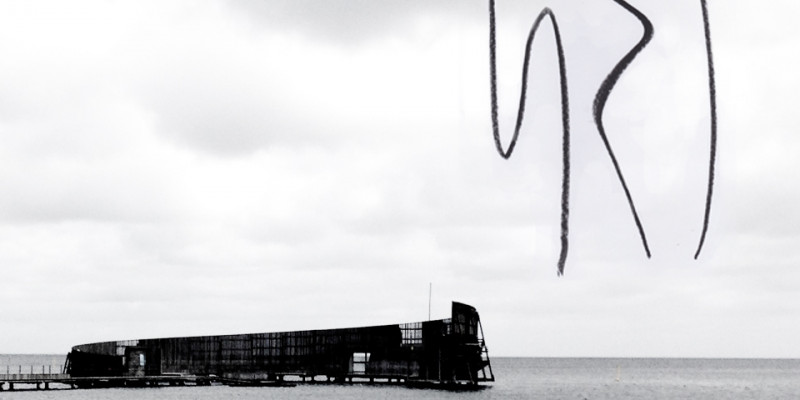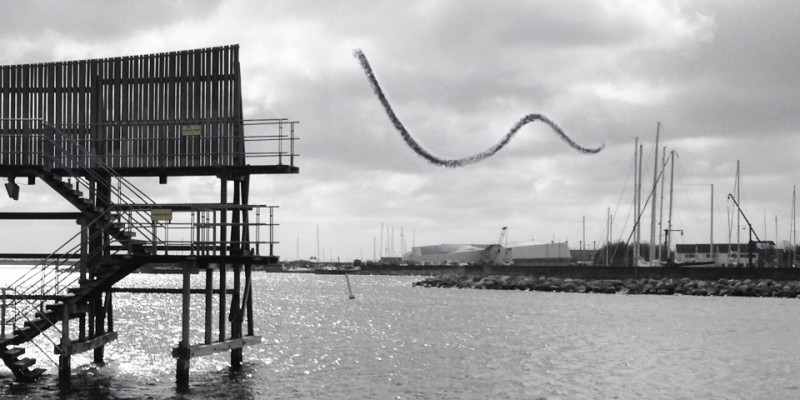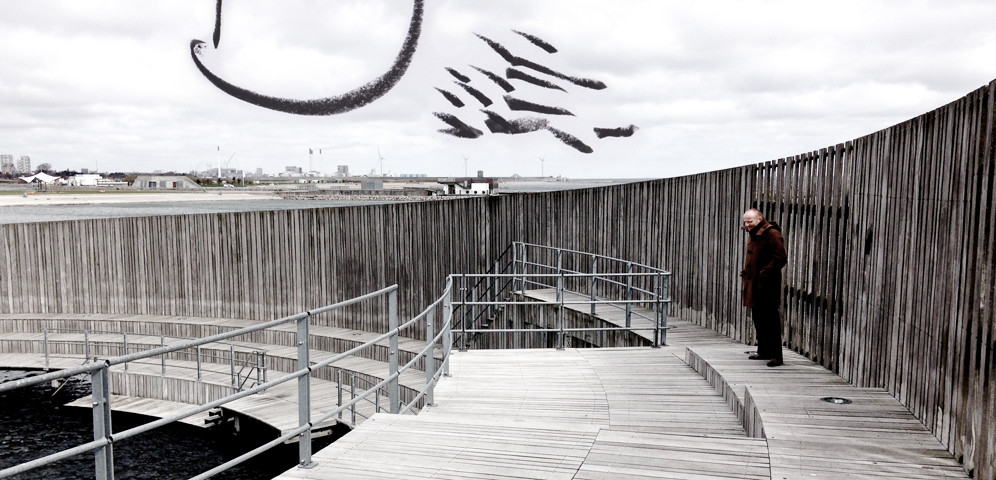
Idiosyncrasy as method
Kastrup Søbad
Dancing is an epistemic practice. Walking is an epistemic practice; eating is an epistemic practice. Drinking is an epistemic practice. Smelling is an epistemic practice. Touching is an epistemic practice. Listening: is an epistemic practice. These practices are not only restricted to their elaborated and formalized appearances in the sciences; in the medical field, in the field of craftsmanship or food design; of urban planning or fashion – of the design of perfume or of soundscapes. All of these practices (and many more I did not mention in this little series) are research activities: they actually form a genuine – I'd even dare to say: a crucial – part of the history of humanities. Without which we simply could not be working in research at all.
This article consists of six brief sections. In these, I will try to explore some more specific, sensory practices in research. These six practices do not represent a complete or even teleological system of sensorial enhanced inquiries; they constitute an open collection, a loose selection of which you may have only encountered one or five until now – in your own research or inquiries – or to which you wish to add two or six more to it. In my following reflections on these practices, I will try to contribute to their further refinement, to a kind of training, and an exploration of their biases and focuses. Idiosyncrasies therefore will guide my investigation. The practices that I will be reflecting on are the practices of: spacing, timing, embodying, intervening, performing and: transmitting.
Spacing
Where are we now? We have gathered together in this location, at a certain point in time, under rather specific conditions of work, of work assignments, of individual work budgets and with particular individual goals and wishes related to this activity today. Right now it is round 10 o'clock in the morning; it is a cloudy yet warm and quite agreeable summer day here in Amagerbro, in the city of Copenhagen, in Denmark. Scandinavia, Europe. We can sense the strong and quite wet wind around here, maybe stronger than we are used to it. We hear the waves of the sea rolling and crashing in. And as this morning is rather rainy and cloudy-grey we sense the raindrops, the rain curtains on our hands, our forehead, through our pants and shoes, we hear it landing on our raincoats, our umbrellas. I can hear and you can hear, very distinctively, also the sounds of you: your movements, your whispering; your simply being here. I try now to project my voice in the best way possible across this open environment – with support of this audio technology. I have to apply a certain higher pressure on my larynx and take more care of my breathing than in the usual lecture hall. This open scene here at the Kastrup Søbad obviously does not support my speaking by the reflections and resonance we would experience in a closed building.
Researching – and we might see even lecturing as a crucial part of researching – researching is spatially quite a peculiar activity. It is peculiar in all its materials, its locations, its time structure and its rather limited and predetermined dynamics and situations where it takes place. Nevertheless, the history of research institutions – their programs, their overarching projects as well as historically documented monographies – tend to compare rather ahistorically, more noble research practices like reading, counting, calculating, drawing or interpreting visual or textual documents to other less noble, less reasonable, less reliable or even acceptable research practices: like kinaesthetic sensing, dancing or walking; eating or drinking, smelling, touching, internal sensing – like listening. Right now, again it is not too easy to focus my personal listening activity on only this specific place – though I do try hard; in combination with all of my efforts to project my voice in an adequate way and to perform a corporeally functional and focusing posture. As I am moreover focused by your very attention as the audience – I try to take this awareness and refocus it to our shared listening environment in this very location.
According to an implicitly underlying hierarchy of the senses, some practices like reading or interpreting came out in the history of science as presumably much more precise, much more stable; and therefore they are regarded as sources for much stronger arguments: techniques of evidence. But, if you take a look around here and draw or read, if you calculate or count anything around here in this Sødbad, it will become quite clear that all of these practices are far from being infallible as such.
Timing
Time keeps on slipping into the future. This moment in which you or I might actually be able to sense something right here – it is rather small. It is actually an incredibly tiny, a very brief epoché as it was called by Edmund Husserl a century ago: a moment of focused and reluctant existence, not hastily judging, but almost in a contemplative form of highly aware presence. In this moment, humanoid aliens (quite similar to us) are maybe even capable of at least getting a certain, if not vague idea of something – and then it is gone. As researchers, we learn to practice timing for this presence as an epistemic strategy. It is quite well known for practitioners of research that the quality of research activities such as reading or calculating lies not in themselves – but in their refinement: in their intense and extensive, highly arduous and recurrent and massively time-based training in academic culture. Only by means of timing, by synchronisation and resynchronisation, by breaks, syncopes or pulses, by beats and rhythms, by loops and quite controlled escalations, we become capable of understanding our own peculiar biases and focuses: as researchers. It is – if you will – a sort of self-analysis, a self-research; officially and quite wordily neglected and maybe even destructive to some more strategic career moves.
To prefer one research practice – be it reading – over any other practice qualifies therefore more as a representation of an unfounded claim: historically and culturally such a preference would be quite arbitrary. But it is a claim, which historically has laid the foundations to our research cultures of today – a quite generative, prolific activity in cultural history. It stays nevertheless a claim, which at present times we would find quite hard to give the status of an objective, a transcultural, and a timeless truth of how to do research. Referring to recent studies on epistemic practices such as reading, calculating, drawing and interpreting we don’t actually find convincing evidence for any such objectivist assumptions. Readers really do jump from line to page, back and forth, they ignore complicated new words they might not dare to look up in the glossary; they take their time – or they are even panicking; disturbed and distracted; right now for instance I am deeply curious about how you and the other participants in this conference will respond: how you will react now and later on – and how all the other presenters and my colleagues at this conference will relate to these reflections. How will my fellow keynote speaker Brandon LaBelle react to this?
Nevertheless, readers (and lecturers, and listeners) do remember selected passages of a text more vividly than others. They are more impressed by some descriptions or arguments they feel inclined to – and less by others they reject or simply do not understand. Timing in reading, timing in speaking, timing in research is never stable. It moves on, time actually keeps on slipping – and so what sounded, in this location, a few seconds ago is not anymore so present, so vivid now. It is lost. It might still be very vividly present in some of your memories. These skills in timing are therefore also skills in time-travelling: jumping between past and present and future moments, between possible and parallel worlds, is part of our epistemic practice too. Memory culture is time-travelling culture.
Timing here and now might not anymore be the same as it was maybe a few minutes before. In your minds, in my mind. It is transforming – just by us gathering here in this wooden architectural structure. Just by making those mouth-pitched noises. Ideas about stuff.
Embodying
Body moving. Your individual body and all the bodies of other humanoids, aliens, creatures, things and assumed or imagined entities round here in this location: we are occupying this location. We are embodying this place. More and more, the longer we are staying here. The location is in us then. As time goes on, it might also become more and more difficult (or does it become easy?) to hold our collective concentration: as the by now quite familiar ambient sounds, the noises of the sea, the rushing of the wind, distant noises from the beach are awashed here. These sounds are now our experience of listening, standing, reflecting, sensing. Though each of you and all of us might be digressing into truly idiosyncratic memories and imaginations – future tasks and recent troubles – most of you might be able to enter a conversation and an argument on selected bits, crucial parts and not so relevant elements in this keynote lecture, later on. But still we might disagree on many, many aspects.
As in such familiar discourses on language: Nothing is clear. Nothing is simple and linear. No experiential situation in the sciences or in the humanities has ever been presented as a concise and simple algorithm, formula or concept of interpretation – from the beginning: but it is this overall contamination and seemingly incommensurable character of, well, any phenomenon around us, that might motivate one to start a further, an earnest inquiry. Then – the story begins. Not with a neatly ordered result – but with irritations: being annoyed and disturbed, not understanding, not knowing, not having any clue what to do now. But maybe, a vague and an unsettling idea; a fragile starting point. A first tiny practice just to try out – quite unsure if this really could work.
In harsh contrast to science journalism’s fascination with cleanrooms, with strict methodologies and the mannerisms and hypocrisies of rationalism even what we call experimental sciences is fundamentally a joyfully dirty, a messy and a deeply troublesome activity – like research always is or should be. Any next step will follow then. We start in these bodily confusions. Confusions, which demand a quest for clarity; confusions which actually generate our efforts to obtain a more precise, a more complex and a more enlightening result.
Intervening
Check the technique. Our actions as researchers are interventions. We disturb a given and maybe worrying process. Entering these situations and processes we make an effort to construct and to analyze a portion, a transcript, an experimental model, a diverting narration or calculation, a new description of this very situation – in order to understand that it may be better in certain aspects. To do so, we need a sense for spacing, timing, embodying – to find the right moment, an interesting angle, an adequate aspect, the right time bracket to intervene. Practices such as calculating and reading, reading articles or reading numbers on a measuring instrument, they rely in quite a similar way on an individual's sense for this right moment to capture, for instance, a static number out of the constant, shivering flow of data, out of the trembling needle or the rapidly jumping visual display, out of the constant discontinuum of actions, sensations, utterances that humanoids might be performing in an ethnographically observed situation. Such situations – be it of apparatuses or of humanoids – are sensible constellations. We might just crush them with our mere presence, and our rude ignorance as outsiders, as creatures who intervene.
To intervene properly, to intervene in the ever present Black Box of every single moment we live in, it is crucial for us as researchers to get a certain idea of the thing going on here right now. Who is doing what? What happened before that? Who might be intending to do what next – or might he or she just be pretending to, or hiding from this? Or what outside frameworks, what dispositives or forms of habitus do predetermine this situation right now? We listen, we sense, we taste. We cherish our idiosyncratic sensibilities. The individual researcher's training and his or her particular, idiosyncratic focus in refining and critically reflecting their skills is central to any research practice. But in contrast to common, self-proclaimed images of objectivist and almost dehumanized research robots: none of our biases, our idiosyncratic foundations or our ambivalences are missing in common and uncommon epistemic practices – be it reading, calculating, eating or touching. The age-old phrase There's no accounting for taste is actually wrong: if there is an accounting that is really necessary or demanded – it is always at a certain point referring to taste, to individual development, to experiences and biography. An account for the obvious would be rather useless.
We intervene – and how we intervene is something we learned more implicitly, more tacitly in continuous contact, exchange, in talking and imitating, in trying and failing: we learned this like we learned any other skills of sensing.
Performing
Speak and spell. While doing nothing and saying nothing – we are still: performing. We are also doing things without any words – sometimes without any actions. As researchers, our actions take effect even if they seem marginal or even superfluous: even more so they take effect. And any sound we emit is proof of our action – and every reflection is even more so. In any research situation, within any more specific context we do operate as researchers in an expanded continuum of epistemic activities. This epistemic continuum is not something alien or far away. It is actually present in everyday life. This vast empire of sensory subtleties in research is, by the way, not at all restricted to research-wise seemingly underestimated practices – such as eating, smelling, listening. Isn’t it true: we smell the dust and the aging of an older archival source? Don’t researchers walk around and mingle with some other humanoid creatures, possibly even becoming friends in ethnographic fieldwork – just in order to fulfil the guidelines of a participatory observation? Gustatory tasting is part of activities in chemistry as well as kinaesthetic senses contribute to various activities in drawing and drafting sketches – be it in mathematics or in the engineering sciences. And finally, the activity of listening is pivotal and elementary as Science & Technology Studies have recently shown us in a wide variety of mechanics, of electro-mechanics and electronics, of early information technology and not the least in various branches of anatomical research, of zoology, of medicine.
Any hierarchy of the senses in epistemology is at least as unfounded and as alien as any other hierarchy of the senses or of some particularly addressed bodily organs; I like to compare the status of such a sensory hierarchy to, well, a hierarchy of daytimes, of weekdays, or of seasons in a year, of landscape structure or to any semiotic preferences. While we all surely do love a good shamanistic and privately superstitious ritual now and then in our individual lives: not one of us would probably be found seriously claiming that for instance research activities should always or should never be executed, let's say, on Fridays or on Mondays, on years that can be divided by 3 or on days in which the moon appears to be in a certain shape in the sky, or while we are thinking of this or that semiotic concept. We all might have – nevertheless – very good reasons for all of these shamanistic, non-intelligible idiosyncratic categories; yet we would never ever erect these as general and objectivist, transcultural and ahistoric truths. And this is exactly what happened to our hierarchy of the senses: it is a wild, shamanistic superstition that we mistake today as an institutional truth. Though we are just performing the senses. We are performing idiosyncrasies – in presenting, in manifesting, in materializing our results. These idiosyncrasies – as individual developments – I would prefer to follow; and not, frankly speaking, follow those assumed as being generalized and objectivised ones.
Individual idiosyncrasies make it possible for us to explore more thoroughly the status, the effects and the importance of personal approaches in research – and this might actually lead to new insights. We would then focus on a reflected and more complex set of idiosyncrasies – across cultures, across various materials, diverse practices, and heterogeneous narrations.
Transmitting
Can you feel it? Our idiosyncrasies are present. They are with us all the time. Though most of the time we do not address them. We might feel more inhibited, even ashamed by them. But after a process of refinement, of exercise and training concerning a thorough use of these idiosyncrasies – this might change. As soon as we leave an alltoo narrow idiosyncratic corpus of writing and reading and counting and calculating lightheartedly behind, we enter a new, far more inspiring, demanding and generative, vast realm of plenty and multiple idiosyncrasies. Idiosyncrasies which we do actually care about. These truly expanded sensibilities we might be using as techniques for research, also provide us with new forms of presentation: as soon as we switch from traditionalist, arbitrary preferences to a more reflected, specific and a selected set from a wider range of idiosyncratic preferences – we can then also claim to explore the whole of the epistemic continuum of practices, senses, substances, concepts in a profound way. We can then – also in presenting our findings – select our preferred idiosyncrasies according to individual issues in research: What practices or sensory activities could provide the most interesting, the most inspiring, the most insightful, and – hopefully – the most irritating outcome at a certain end of our research? Research in touch, in taste; in dance, smell or sound.
How can we, how can you, apply those idiosyncrasies as a method? Actually, I would guess many of you already do your research in this very way. The following summary therefore might only be a redundant memorizing; but as for some others: Maybe the following rules of the game could possibly lead to surprising new mutations, unknown specimens of research? Research in a specific sensory or non-sensory field requires a basic orientation at first, a sensible and maybe unconventional but always highly individual account of what is actually there: What is here, what do we have now? A state of this very moment. This multisensory constellation. The Spacing and the Timing is being explored – which leads you to an almost involuntarily Embodying of this very field of research. Spatial arrangements and time structures become your second nature, maybe you are not going totally native in this field – but you manage to become very familiar with many elements in it. You can almost foresee, it seems to you, the next actions in it. Then you take action: you can cut out elements, sections, aspects, things or situations, forms of action or of utterances, practices or personae. Now you are able to scrutinize these. Now you can start Intervening in this sensory field. You might be doing this as an artist, as a researcher, as an artist researcher, or as a researcher on artistic processes. In Performing you take new and different, exploratory and analytical, disruptive or harmonizing actions. You provoke new situated events; you generate dissent and consent, ruptures and new experiences, new conclusions and new, unfounded claims. Finally, you go for Transmitting: You present to others – not familiar with this sensory or non-sensory field you were researching in – you present what happened to you. You tell moments and insecurities, doubts and euphoria, excess and boredom. You make artefacts accessible that were generated in the course of your research. You give your collaborators in this field a voice: you give them a chance to contradict your observations, your assumptions, your claims. You give a certain insight into a maybe secluded and secretive aspect of contemporary cultural life.
Generativity. Idiosyncrasy is a method.
Epilogue
Holger Schulze’s keynote presentation took place at Sneglen at Kastrup Søbad on 18 June 2015. It was the opening lecture for the site-specific conference, Fluid States, Fluid Sounds. During the keynote presentation, Holger Schulze referred to and literally pointed at the site-specific situation of his oral presentation. For instance: at the site, the weather, the social context and at the thoughts of his participating colleagues. In the written text, these gestures in the embodied situation are omitted. The text is thus just one approach to the epistemic continuum (of for instance sound, space, place, performance, participation) investigated at the conference.

